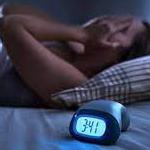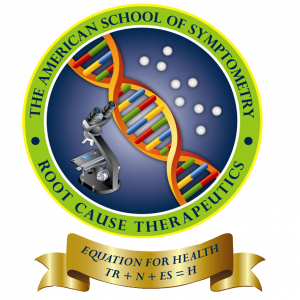
Dr. Maxwell Nartey
Professor of Symptometric Science, American School of Symptometry, NFP
Many individuals cannot sleep, or they cannot sleep soundly. Some go to bed, but they cannot fall asleep immediately. They will fall asleep after midnight or close to midnight. There are individuals who wake up to use the bathroom but they cannot fall asleep again. Then, there are individuals whose mind stays active for most of the night. They can hear the bathroom door opening and closing, or they can overhear someone talking on the phone in the adjacent room.
What causes sleep disorders?
It is a massively congested liver, pancreas and small intestine that cause sleep disorders. Here is what actually happens to cause sleep disorders.
Brain cells use peptides to manufacture blockers and filters before a person goes to bed. There are five kinds of peptides: 1) dipeptides 2) tripeptides 3) tetrapeptides 4) neuropeptides and 5) polypeptides.
It is the hormone called melatonin that stimulates the conversion of non-essential amino acids to the above-mentioned peptides. The brain cells would then convert dipeptides to acetylcholine blockers and filters. What is acetylcholine?
Acetylcholine is the neurotransmitter for alertness, focus, concentration, attention, intelligence, analysis, comprehension, coordination, thinking, thought processing, calculation, planning and memory. Basically, it is the neurotransmitter that ends the circadian cycle so that the person can wake up.
By blocking the release of acetylcholine during sleep, the acetylcholine blockers are making it possible for a person to sleep soundly for five to seven hours. This is why a person who fails to produce acetylcholine blockers before going to bed will have an active mind for a few more hours.
Importance of sound sleep
Sleeping soundly is important because the mental and intellectual faculties, as well as three of the five senses deserve some rest.
The two senses that remain active during sleep are: the senses of touch, and smell. This is because they collect sensory information from the immediate surrounding and transmit it to the central nervous system for immediate evaluation and action.
It is melatonin that gives the mental and intellectual faculties a well-deserved rest by 1) stimulating the production of the peptides that block the release of acetylcholine 2) stimulating the conversion of metabolic energy to sleep energy and 3) stimulating the production of image blockers and image erasers.
There is a difference between induced sleep and natural sound sleep.
Alcohol, pharmaceutical sleeping pills and botanical sleeping pills generate sleep. It is because amino acids were not converted, and peptides were not produced during sleep induction that many of the systems of the alcohol drinker or the drug taker would be ruined. A person with many wrecked systems will, in the long run, not be healthy mentally, emotionally, metabolically, and sexually.
Natural sound sleep allows the full participation of melatonin and serotonin that the pineal gland produces; and serotonin is the healing neurotransmitter. 70% of healing is done when we are sleeping soundly, and our brain waves are normal.
Dreams
A dream is an occasional sleep disorder which indicates that the person failed to produce impulse blockers, image blockers and image erasers before they went to bed. All they produced were image filters.
Fundamentally, a dream is a manifestation of a stored impulse or several stored impulses in different shapes, and forms. Colors seldom appear in dreams because light blockers block light and colors.
The impulses that slipped out of memory or out of the limbic system, recreated past scenes and experiences and sometimes, they recreated traumas in their most exaggerated forms. This is why dreams are not taken seriously.
Scenes and real life experiences are stored as impulses in the genes’ histones. These genes are in the memory section of our hippocampus while emotions and traumas are stored as impulses in the genes within the the limbic system of our hippocampus. Genes are perched on chromosomes within our nuclei.
The storage of emotional impulses started during the gestation period, whereas the storage of scenes and experiences started a few years after birth.
Therefore, if a person cannot produce impulse blockers, some of the stored impulses will filter through and turn into known or unknown faces, objects, scenes, etc. The impulses from the limbic system will depict happy moments, frightening moments, or tragic moments.
Nice dreams depict happy and peaceful moments; bad dreams depict sad or tragic moments; and nightmares depict frightening moments.
If a person had a dream, but they cannot remember it, it is because the image erasers wiped out their dream before they woke up. In truth, the image erasers did their job. We have a lot to think about already.
What is the connection between the food we eat and dreams?
Generally, the chemicals or the alkaloids in the food a person ate for dinner can prevent them from producing impulse blockers, image blockers and image erasers for that night, but they can still produce impulse filters. It is the non-production of blockers and erasers that allows happy moments, frightening moments or tragic moments to filter through to produce a nice dream, a nightmare or a bad dream.
Insomnia
Insomnia is a person’s inability to sleep throughout the night. Why can’t they sleep throughout the night? The answer is, they cannot manufacture various peptides to produce acetylcholine blockers.
The reason they cannot produce acetylcholine blockers is, their liver, stomach and pancreas are congested. They need some attention. Here are some additional facts.
The liver converts the essential amino acid called phenylalanine to tyrosine. The pineal gland converts tyrosine to melatonin and serotonin. The brain cells convert tyrosine to acetylcholine.
It is liver enzymes, pepsin that the stomach produces, and trypsin, chymotrypsin and carboxypeptidase that the pancreas produces that collectively convert protein to amino acids. The protein-to-amino acid conversion allows melatonin to stimulate four conversions before the person goes to bed.
The first conversion entails converting non-essential amino acids including tyrosine to peptides, dipeptides, tripeptides, tetrapeptides, neuropeptides and polypeptide chains.
The second conversion entails converting dipeptides and tripeptides to impulse filters and blockers; voice, noise, and sound blockers; light blockers, image and face blockers, object blockers, and image erasers so that the person can sleep soundly and peacefully.
The third conversion entails converting tetrapeptides to acetylcholine blockers.
The fourth conversion allows polypeptides to facilitate the transfer from the conscious state to the subconscious state, and keep the person in this subconscious state for four to six hours with a minor break to use the bathroom and go back to sleep again.
The liver is central to our longevity and our overall health. Alcohol will destroy it unless the person knows what to do to protect their liver.
Conversion blockers
Theobromine in coffee, and in chocolate; and theophylline in teas, may periodically interfere with various peptide conversions. It is this interference that may cause insomnia in tea drinkers, and in coffee drinkers or in former tea and coffee drinkers.
Also, certain pharmaceutical drugs, and unsolved problems like financial problems, can interfere with serial conversions to cause insomnia. There are even babies who suffer from insomnia.
Somnambulism
Somnambulism is defined as sleepwalking. It is a situation where the person is partly in a subconscious state and partly in the conscious state. In other words, they are partly asleep and partly awake.
For example, after sleeping for two to three hours, the person wakes up, goes to the kitchen, eats a snack, drinks water, goes to the living room, turns on the TV, opens a window, and goes back to bed without having the slightest recollection of what they did.
What causes somnambulism?
In somnambulism, the person produced acetylcholine filters, but they did not produce acetylcholine blockers. As a result, after sleeping for two to three hours, acetylcholine slips through to the subconscious state to stimulate conscious action. It is because the person’s memory is not active at that time that nothing is being recorded.
Also, because the memory was not active, the somnambulist might even suspect someone else of leaving breadcrumbs on the kitchen table, leaving the TV on, and opening the living room window.
There have been instances where somnambulists committed crimes in their sleep without having the faintest recollection of who committed the crime, or when and how the crime was committed. Their fingerprints and DNA were found at the crime scene, but they still had no recollection of how and when they committed the crime. Eventually, a jury convicted them of manslaughter.
Nowadays, somnambulists are caught getting up in the middle of the night to turn on the TV, eat a snack, and not cleaning after themselves, etc. thanks to video recordings. It was the video replay that compelled them to admit that they are somnambulists.
Narcolepsy
There is a difference between general narcolepsy and tsetse fly narcolepsy.
General narcolepsy is a sleep disorder that keeps a person more in the subconscious state than in the conscious state. This happens because the person cannot produce enough polypeptides to balance their time in the conscious state with their time in the subconscious state.
The reason they cannot produce enough acetylcholine for their brain cells is, their liver cannot convert phenylalanine to more tyrosine for their pineal gland. As a result, their pineal gland keeps producing too much melatonin, and less serotonin.
Marijuana has been found to cause an imbalance between acetylcholine and melatonin, thereby predisposing many marijuana smokers to sleep disorders.
Excess melatonin makes a person produce more polypeptides to keep them in the subconscious state, but not enough acetylcholine to bring them back to the conscious state and keep them awake. If they are awake they may not be alert, and focused because they cannot produce enough focus energy. Then, they cannot produce enough neurons for memory because they cannot produce enough mental energy.
The worse case of narcolepsy that was ever recorded was individuals sleeping for two to three consecutive days.
Tsetse fly narcolepsy
A tsetse fly is a fly whose bite leaves a destructive ameba in its victim. Ameba is a water parasite. The ameba that causes tsetse fly narcolepsy is called Trypanosoma.
The toxin of Trypanosoma destroys the acetylcholine blockers, thereby increasing the amount of melatonin that the pineal gland produces.
It is the abundance of melatonin and the production of extremely little acetylcholine that make it impossible for the tsetse fly victim to stay awake, alert, and focused for more than two to three hours. As a result, they are almost always sleeping or feeling sleepy.
They will wake up to eat, use the bathroom, and go back to sleep again. They have no social life, and they cannot work.
Brain waves
Electroencephalogram (EEG) detects normal and abnormal brain waves during sleep. Symptometric research has discovered that it is the non-production of specific peptides that causes abnormal alpha waves, beta waves, theta waves and delta waves during sleep.
Capillary collapse, the little-known cause of sleep disorders
If the cerebrospinal fluid is extremely filthy or the cerebral capillaries have collapsed, dipeptides, tripeptides, tetrapeptides and polypeptides will not circulate to the brain. As a result, the brain cells cannot have raw materials to produce blockers and erasers.
Therefore, insomnia, narcolepsy, somnambulism and other sleep disorders can also occur in individuals whose cerebral capillaries have collapsed, or they have a filthy cerebrospinal fluid. Considering the above, a person who has a sleep disorder or has abnormal brain waves, has extremely dirty blood, their diet is horrible, they are suffering from cell neglect and their digestive organs are massively congested.
© Copyright 2021, The American School of Symptometry, NFP. No part of this publication may be reproduced or transmitted in any form or by any means, electronic or mechanical, including photocopying, recording, or by any information storage and retrieval system without the written permission of The American School of Symptometry, NFP. Library of Congress copyright number Txu 1-621-370, Washington D.C.


 Previous Post
Previous Post Next Post
Next Post